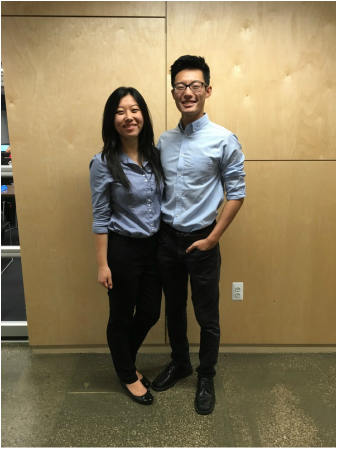
Q: Where are you from?
A: I was born in this really small village called Ambajogai, which is located in Maharashtra. It’s a really small village but at that time it was the cultural capital of my state. I was raised in the largest city nearby, which is called Aurangabad. After 10th grade I moved to Pune, which is sort of the new cultural capital with lots of software jobs and service industries coming into the city. Then I spent a year in Mumbai, which is the capital city of my state, and I went for my undergraduate degree at Delhi, the capital of India. So I sort of moved up the settlement hierarchy.
Q: How did you get to where you are in the context of your field, starting from a small village and India and making your way to New York and now Detroit?
A: For my junior college, which is like junior and senior year in America, I went to Pune and attended one of the most prestigious schools, Fergusson College. At the same time, I was attending an academy that selects 40 students from all over India, and trains them in physics, chemistry, and math. Our tutor, who coached India to two gold medals in the the 2002 international Olympiad, had this rigorous regime, where you dedicated 12 hours a day to studying and the remaining 12 hours attending classes and doing your day to day activities. Following that for two years became extremely monotonous. I was in my mid teens, and somehow I lost my temperament somewhere down the road, and when I appeared for my IIT-JEE (Indian Institutes of Technology Joint Entrance Examination) I didn’t do that well.
That was the first major failure I faced in my life, because everyone expected me to do really well and I was not part from the 20-odd people from these 40 who made it to the IITs. I couldn’t make it to the engineering colleges but I could make it to the design colleges, because that was the next-best thing and it’s still in the top tier of public institutions, which take only the best students in the country. So I went to the school of architecture and planning in Delhi, and that was a conscious choice. I could have done pharmaceuticals or paper and pulp engineering, but I chose to study this emerging field in India, because rapid urbanization was supposed to happen and is still supposed to happen, and I was able to predict that something huge is going to happen in this field.
My four years of college were excellent, and I worked with local government to get a feel of what it was like to have a normal job in planning. It was monotonous but I was able to draft the first framework for highway road amenities in India and that has now been accepted as a government resolution. I did the first zoning ordinances, designed the first templates of how these government-owned rest stops would look. This all really allowed me to fit into Cornell for my master’s program.
Q: What’s been the biggest surprise to you since coming to America?
A: The picture I had of America before arriving was one that ranged from the early 60s all the way up to the late 90s. When I actually got here, the kind of choice people have, the attitude and behavior, the change in the demographics, the music was all surprising to me.
Another major fact that I noticed, with Cornell being the first place I landed, is that you can be surrounded by people that are liberal and well-educated, but as soon as you step off island it looks very different. It creates an elitist mentality in a lot of people’s minds, because you always end up going to these enclaves of liberal thought and well-educated people.
I think the best experience I had was due to the Telluride Association, which conducts summer seminars where unprivileged high school students are given the chance to visit a university for a summer. Students are sent out to conduct interviews with these kids, and I was lucky enough to be chosen by two other fellows to accompany them. We went all the way over to Iowa from Ithaca, interviewing 12 students on the way. That was my first experience out of the campus an into America, and the harsh realities these kids face seem unheard of on the liberal island.
I was surprised to see how America is still divided under many different nuances, economic class overlapping with social and racial structures with a deep historical origin. Many people in America end up forgetting that they themselves are immigrants, and when people stop thinking about themselves this way this is where problems arise.
Q: What do you enjoy doing in Detroit?
A: I enjoy walking around the cultural district where I’m living; there area number of museums and art galleries. I’ve gotten to meet a lot of people, and other than that I read, watch soccer, and do my work.
Q: What type of music do you like?
A: I would say something like progressive metal is my favorite, but I also like classic rock and I’ve started listening to some Blues and Motown since coming here. Some favorite bands are… well I’ll list some names in chronological order: The Doors, Dire Straits, Def Leppard, Motley Crue, Rage Against the Machine, Run DMC, Creed, Bowling for Soup, Anthrax, Metallica, Megadeth… it’s hard. Oh and Queen, The Eagles, Bob Marley, Black Sabbath… but Pink Floyd has to be my #1. The electronic movement started here but it killed the art of it, to me.
Thanks Shamil!















 RSS Feed
RSS Feed
